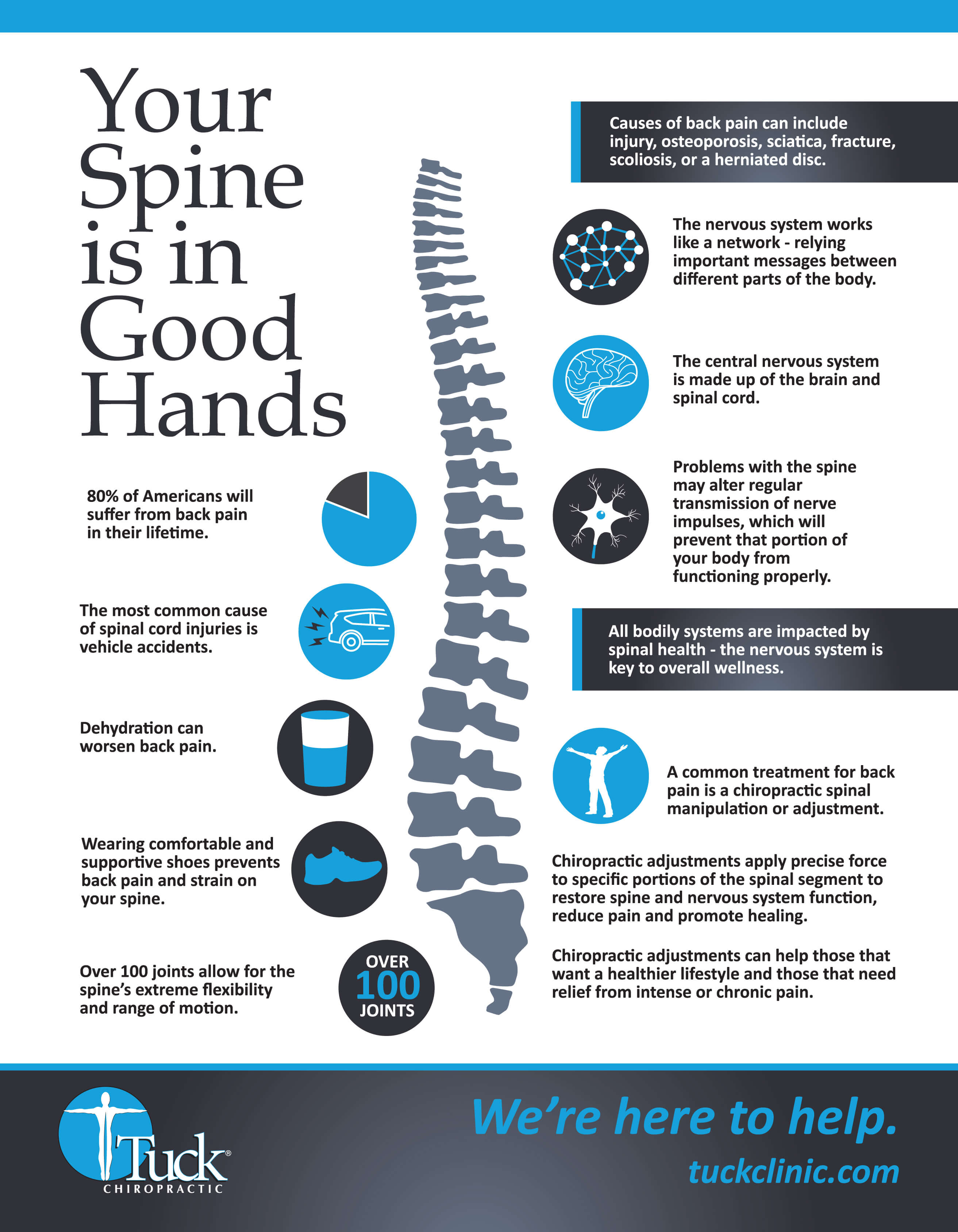The Link Between Stance And Pain In The Back: Ways To Guarantee Appropriate Positioning All Day
The Link Between Stance And Pain In The Back: Ways To Guarantee Appropriate Positioning All Day
Blog Article
Short Article By-Kragh Ritchie
Preserving proper position isn't almost sitting up straight; it's about straightening your body in a way that sustains your spine and lowers the risk of back pain. The means you sit, stand, and move throughout the day can dramatically impact your spinal health and wellness. But how precisely can you ensure great alignment consistently, also during busy days loaded with different tasks? Let's dig deeper into the subtle yet impactful modifications you can make to your daily regimen to keep your back satisfied and healthy.
Importance of Proper Posture
Proper position is vital in preserving a healthy and balanced back and avoiding discomfort. When you rest or stand with good posture, your spine remains in placement, decreasing strain on your muscular tissues, ligaments, and joints. This alignment enables the body to disperse weight evenly, avoiding extreme stress on particular areas that can cause pain and pain. By maintaining your spinal column appropriately straightened, you can additionally boost your breathing and digestion, as slouching can compress organs and restrict their capability.
Moreover, maintaining great pose can enhance your general appearance and positive self-image. When you stand tall with your shoulders back and head held high, you show self-confidence and show up more friendly. Great posture can also make you feel more stimulated and alert, as it promotes proper blood circulation and enables your muscle mass to work effectively.
Integrating correct position into your everyday regimen, whether sitting at a workdesk, strolling, or exercising, is necessary for stopping pain in the back and advertising general health. Keep in mind, a small modification in exactly how you hold on your own can make a significant distinction in exactly how you feel and operate throughout the day.
Common Postural Mistakes
When it involves preserving good stance, several people unknowingly make typical errors that can add to back pain and discomfort. Among one of the most widespread mistakes is slumping over or stooping over while resting or standing. This position puts excessive stress on the spinal column and can bring about muscle mass imbalances and discomfort in the future.
where chiropractic care ltd is overarching the reduced back, which can flatten the natural curve of the spine and cause discomfort. Furthermore, going across legs while sitting may feel comfy, yet it can produce an inequality in the hips and pelvis, resulting in postural problems.
Utilizing a pillow that's as well soft or also firm while sleeping can also affect your alignment and contribute to pain in the back. Finally, constantly craning your neck to consider displays or adjusting your position frequently can strain the neck and shoulders. Being mindful of these common postural blunders can help you maintain better placement and reduce the risk of back pain.
Tips for Correcting Placement
To boost your alignment and decrease back pain, it's vital to focus on making small adjustments throughout your everyday regimen. Beginning by bearing in https://holdenmhbwq.blogs100.com/31132955/take-a-look-at-the-multitude-of-cushion-choices-for-dealing-with-neck-discomfort-enriched-with-professional-understandings-and-practical-ideas-find-out-how-to-guarantee-even-more-serene-evenings . When resting, ensure your feet are level on the floor, your back is straight, and your shoulders are unwinded. Stay clear of slouching or leaning to one side. Usage ergonomic chairs or paddings to sustain your lower back.
When standing, disperse your weight evenly on both feet, maintain your knees a little bent, and embed your pelvis. Involve your core muscle mass to support your spinal column. Take breaks to stretch and walk if you have a sedentary task. Integrate exercises that strengthen your core and back muscular tissues, such as planks or bridges.
While resting, use a cushion that sustains the all-natural contour of your neck to maintain correct spine placement. Avoid sleeping on your belly, as it can strain your neck and back. By being mindful of these pointers and making small changes, you can slowly remedy your placement and ease pain in the back.
Conclusion
Keep in mind, keeping great posture is key to preventing pain in the back and advertising spinal wellness. By bearing in mind your positioning, distributing weight evenly, and engaging your core muscles, you can reduce strain on your back and lessen the risk of pain and injury. Integrate ergonomic support, take regular breaks to stretch, and enhance your core and back muscles to maintain proper alignment throughout the day. Your back will thank you for it!
